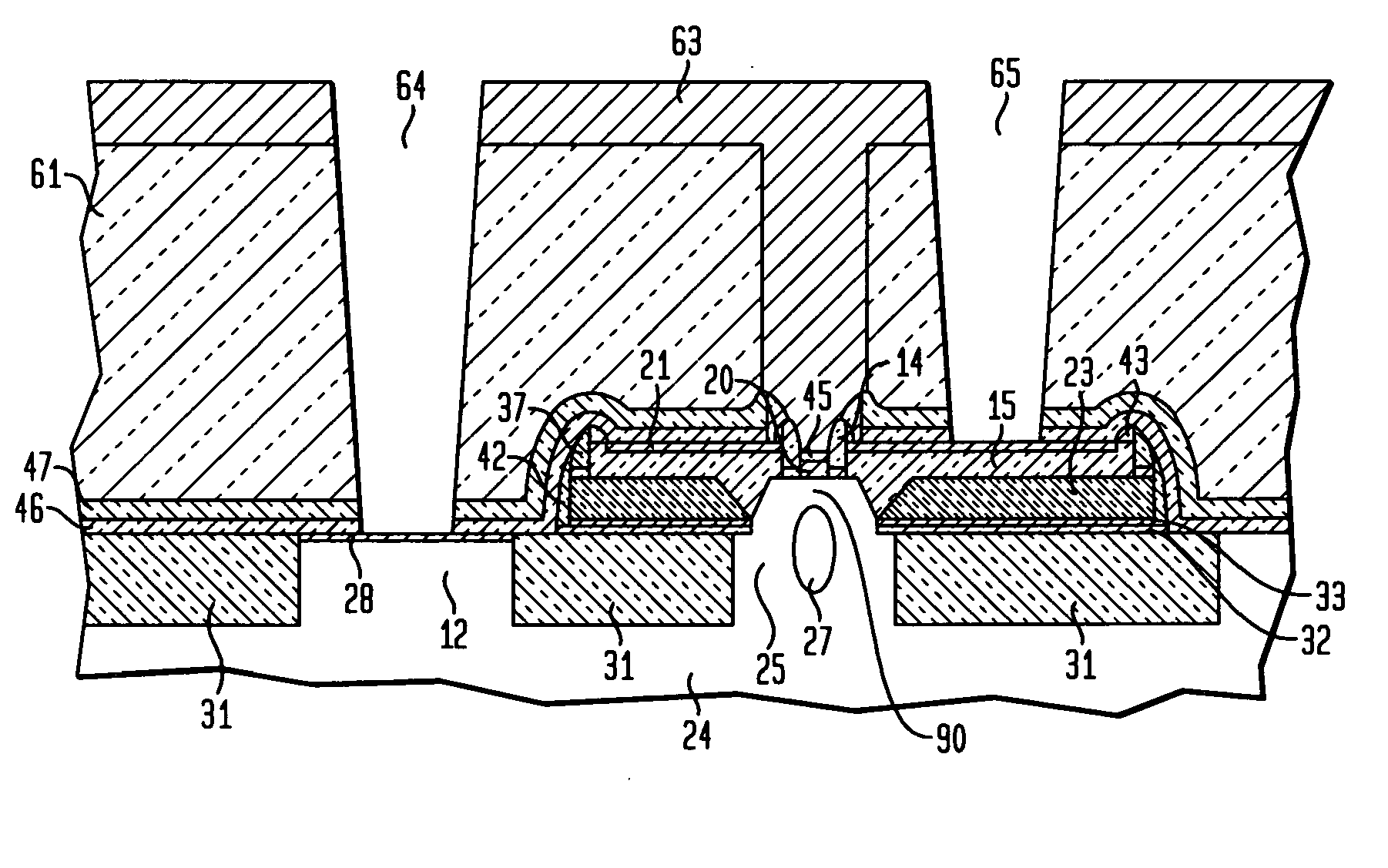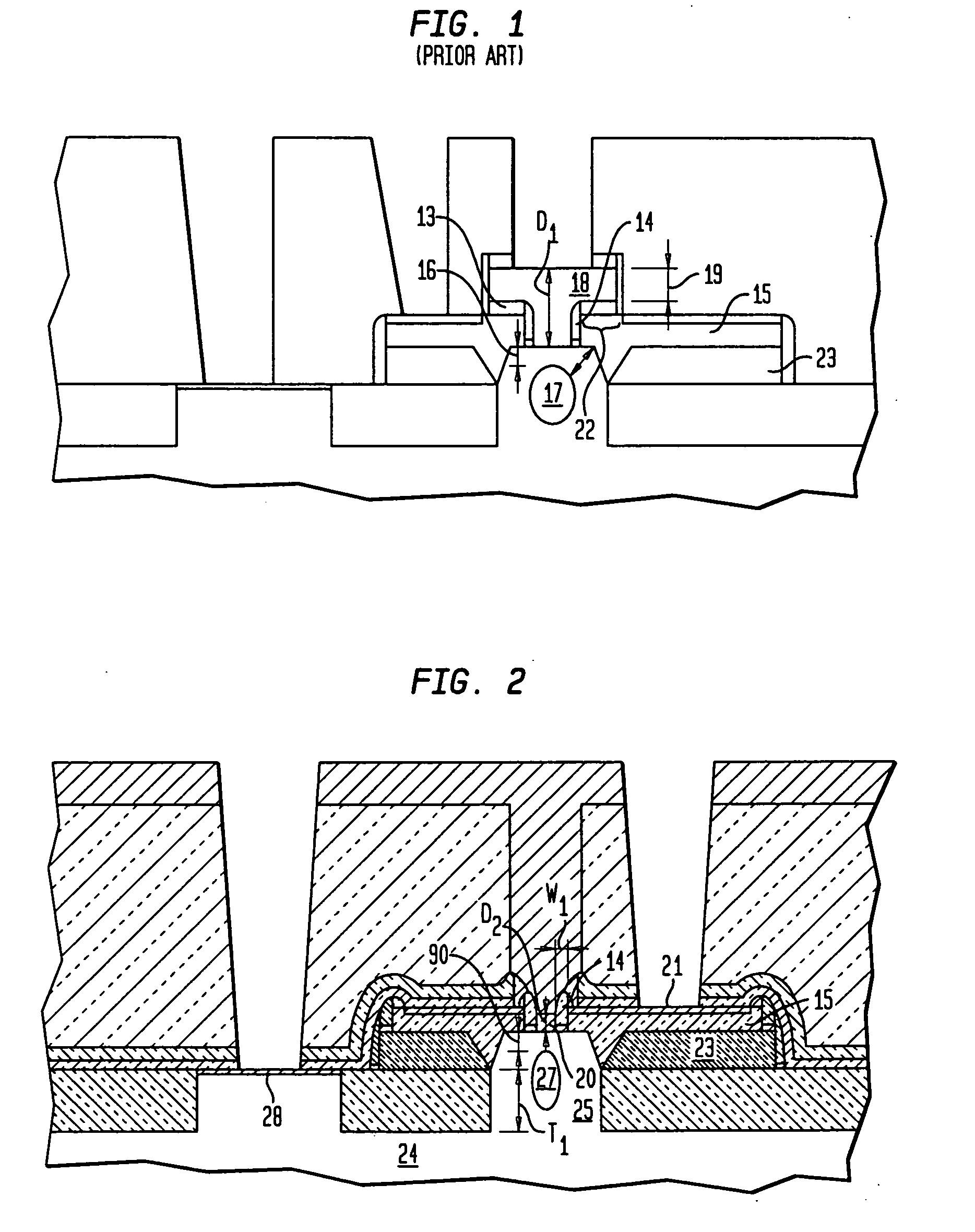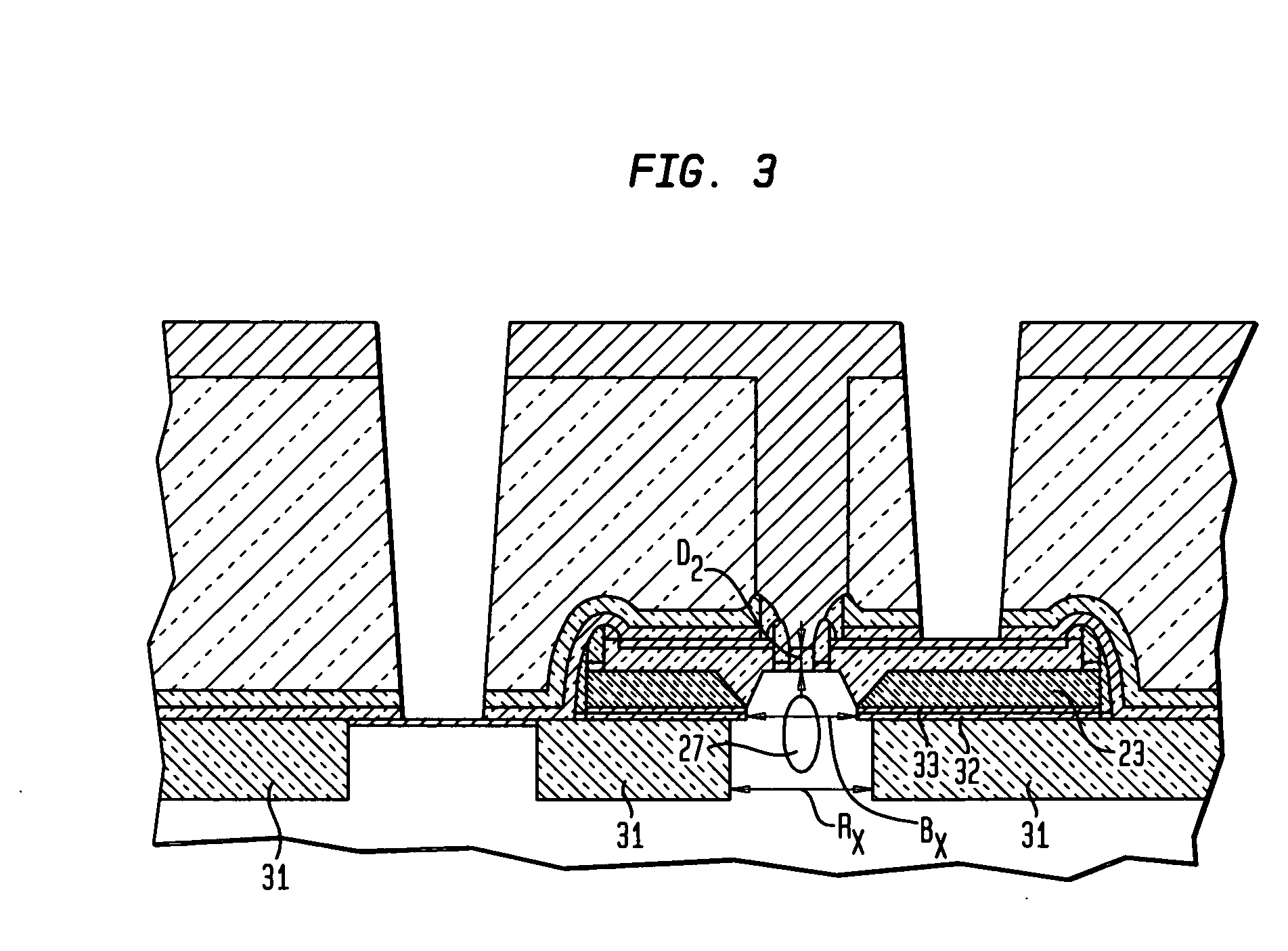Transistor structure with minimized parasitics and method of fabricating the same
a transistor and structure technology, applied in the field of bipolar transistors, can solve the problems of reducing the overall performance of the device, disadvantageously affecting the cut off frequency (fsub>t/sub>) and maximum oscillation frequency, and increasing the parasitic effect of the device, so as to achieve the effect of reducing the parasitic effect and high performan
- Summary
- Abstract
- Description
- Claims
- Application Information
AI Technical Summary
Benefits of technology
Problems solved by technology
Method used
Image
Examples
Embodiment Construction
[0062] The present invention directed to a bipolar transistor having improved maximum oscillation frequency (fmax), and a method of fabricating a bipolar transistor having improved maximum oscillation frequency (fmax), will now be described in greater detail by referring to the drawings that accompany the present application. For simplicity, a single bipolar device region is shown in the drawings. It is understood that other bipolar device regions as well as digital logic circuitry (not shown) may be formed adjacent to the bipolar device region depicted in the drawings. In the accompanying drawings, like and or corresponding elements are referred to by like reference numbers.
[0063] Referring to FIG. 2 illustrating one embodiment of the present invention, a bipolar transistor is provided having a recessed emitter 20 and optimized emitter to base spacers 14 (herein after emitter / base spacers). The recessed emitter 20 reduces the emitter resistance (Re) and the emitter-base capacitanc...
PUM
 Login to View More
Login to View More Abstract
Description
Claims
Application Information
 Login to View More
Login to View More - R&D
- Intellectual Property
- Life Sciences
- Materials
- Tech Scout
- Unparalleled Data Quality
- Higher Quality Content
- 60% Fewer Hallucinations
Browse by: Latest US Patents, China's latest patents, Technical Efficacy Thesaurus, Application Domain, Technology Topic, Popular Technical Reports.
© 2025 PatSnap. All rights reserved.Legal|Privacy policy|Modern Slavery Act Transparency Statement|Sitemap|About US| Contact US: help@patsnap.com



